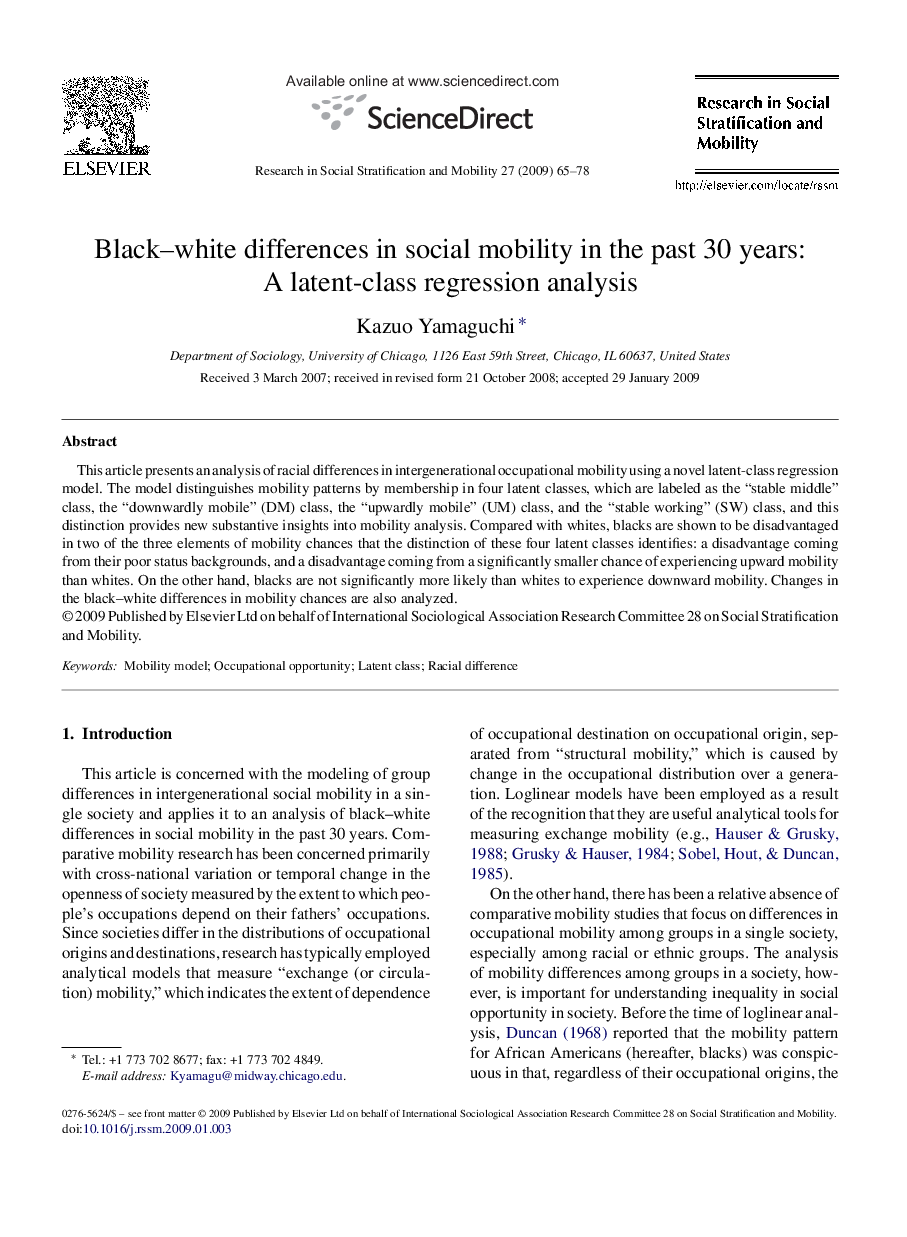| Article ID | Journal | Published Year | Pages | File Type |
|---|---|---|---|---|
| 999755 | Research in Social Stratification and Mobility | 2009 | 14 Pages |
Abstract
This article presents an analysis of racial differences in intergenerational occupational mobility using a novel latent-class regression model. The model distinguishes mobility patterns by membership in four latent classes, which are labeled as the “stable middle” class, the “downwardly mobile” (DM) class, the “upwardly mobile” (UM) class, and the “stable working” (SW) class, and this distinction provides new substantive insights into mobility analysis. Compared with whites, blacks are shown to be disadvantaged in two of the three elements of mobility chances that the distinction of these four latent classes identifies: a disadvantage coming from their poor status backgrounds, and a disadvantage coming from a significantly smaller chance of experiencing upward mobility than whites. On the other hand, blacks are not significantly more likely than whites to experience downward mobility. Changes in the black-white differences in mobility chances are also analyzed.
Related Topics
Social Sciences and Humanities
Economics, Econometrics and Finance
Economics, Econometrics and Finance (General)
Authors
Kazuo Yamaguchi,
